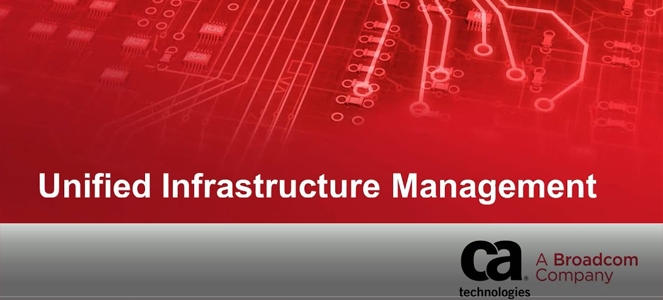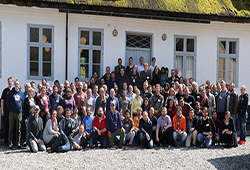Unified Infrastructure Management 20.3.x
Course "Unified Infrastructure Management 20.3.x – System Administration Foundations 200" Overview:
Your IT mix represents an increasingly unrelated blend of cloud-based services, dynamic virtualized environments, and legacy on-premise applications. While ensuring optimal performance of all these services is vital, it is growing increasingly complex, costly, and time consuming to monitor and control the performance of these distributed environments. With CA UIM, you get a simple yet powerful way to track all the services your business cares about, no matter where they reside.
CA UIM delivers the essential capabilities you need to proactively monitor and manage alarms, performance, and Service Level Agreements (SLAs) across even the most dynamic and complex deployments. Instead of having to deploy multiple point solutions, you can leverage CA UIM and get a single platform to manage your IT infrastructure and services—whether they are on premise or in the cloud.
Learning process:
- Plan a scalable management of the IT infrastructure of your business
- Gain insights about monitored data and customize information appropriate to your role or business context using the Unified Management Portal (UMP), including the new CA Business Intelligence dashboards.
- Set up the basic parameters of the Nimsoft Alarm Server (NAS) quickly to view and manage alarms, and learn how to incorporate the new Event Management Service (EMS) into your environment.
- Extend the monitoring capabilities of CA UIM through the configuration of probes using the new Monitoring Configuration Service, IM and AC.
- Leverage probe package functionality to preconfigure monitored metrics sets and deploy these standardized sets rapidly and effectively to the managed infrastructure.
- Scale the CA UIM architecture to meet your business needs by deploying multiple hubs.
- Apply the advanced capabilities of the NAS Auto-Operator (AO) to perform complex alarm handling, thereby reducing or eliminating manual intervention.
- Translate underlying Quality of Service (QoS) metrics into their actual business values for your organization.
Module 1 – CA UIM Architecture & Monitoring Governance
- Identify the key components of CA UIM.
- Apply monitoring governance to fulfill your monitoring requirements
Module 2 – Create USM Groups
- Create USM Groups
- Deploy a robot and configure monitoring
- Identify the types of data to monitor
Module 3 – Discovery and Robot Deployment Module 4 – Examine Monitered Data
- Perform network discovery
- Deploy robots
- View Monitored Data
- Examine Monitored Data in CA Business Intelligence Dashboards
Module 5 – Basic Alarm Notifications
- Configure the emailgtw probe
- Activate AO logging
- Validate auto-acknowledgment
- Build an AO profile to send emails on alarms
- Define maintenance schedules
Module 6 – Advanced Monitoring Administration
- Configure monitoring with MCS
- Configure MCS application discovery
- Deploy probes
- Configure probes using IM & AC
- Indentify benefits of probe packages and super packages
- Define and configure probe packages and super packages.
Module 7 – Perform Advanced Robot Configurations
- Plan hub-to-hub communications
- Implement hub-to-hub communications
Module 8 – Perform Advanced Alarm Activities
- Build an AO profile
- Enhance alarm messages using the alarm_enrichment probe
- Perform advanced alarm processing
- Incorporate Event Management Service (EMS)
Module 9 – Perform SLM Tasks
- Describe Service Level Management(SLM), Service Level Agreement (SLAs), Service Level Objectives (SLOs), and QoS constraints.
- Define SLAs, SLOs, and QoS constraints
Module 10 – Configure Reporting Capabilities Using PRD, List Views, and Custom Dashboards
- Design charts with the Performance Reports Designer (PRD)
- Design reports using the List Designer
- Design custom dashboards using the Dashboard Designer
Module 11 – Configure the UMP and Portal Views
- Differentiate between users, accounts, and account contacts
- Create a site
- Build a portal view
Module 12 – Perform Advance Probe Configurations and Troubleshooting
- Perform advanced probe configurations
- Troubleshoot CA UIM
- Merge data








